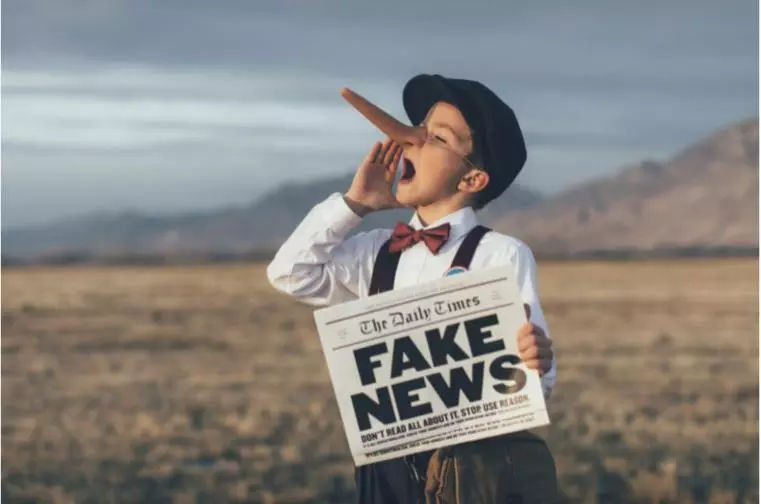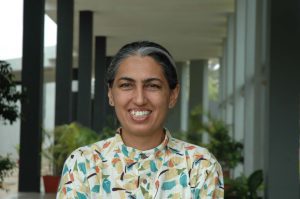
The psychology of fake news, and the practicality of sifting it out
Three questions can make a difference: Who is behind the information, what is the evidence, what do other sources say?

At the end of February and in early March, several tweets, with photos and videos ostensibly showing that migrant workers from Bihar had been fatally attacked in Tamil Nadu, went viral. Mainstream media, too, picked them up and, without much verification, put the news out that this had indeed happened.
The Tamil Nadu police and administration and various fact checkers responded quite quickly to quell these rumours and point out that in most cases, the videos were unrelated, even if they were from districts in Tamil Nadu. In some others, they were not even from Tamil Nadu. The situation was brought quickly under control. No lives were lost, not much damage done.
But, not everyone is as lucky all the time. In 2020, the poultry sector went through a difficult time simply because of a couple of hashtags that linked coronavirus with eating meat. The hashtags were accompanied by images of ill-looking chicken, implying that it was a consequence of the virus that could make its way to humans who consumed it. Some reports say that the poultry industry lost $1.5 million a day as a consequence.
A lie spreads six times faster
False and misleading content makes for a lot of the flotsam and jetsam of the ocean that is the Web, messaging services, and social media. It also spreads about six times faster than the truth. A fact check to find the truth takes anything from a few hours to a few days to be out. In the meantime, the spread of false information could have resulted in deadly consequences.
Also read: FIR against Opindia for spreading fake news about migrant workers in Tamil Nadu
Technology is a many-splendored thing. It makes our lives so much easier and helps us keep in touch with loved ones thousands of miles away in an instant, apart from entertaining and informing us. But, the same affordances of instantaneity and virality can also make for a dangerous weapon to create conflict, disharmony, and mistrust at the very least, with more long-lasting and irreversible consequences at the worst. In 2018, the country saw dozens of lives lost because of a misleading WhatsApp message that warned people about strangers who could be potential child kidnappers.
The Internet and the World Wide Web have, for the first time, ensured that we have a surfeit of information — we are flooded with more information than we can handle and we have trouble processing it. Misinformation has been around since time immemorial, but it is thanks to modern communication technologies that it is now so widespread that it is difficult for anyone to distinguish between what is fake and what is not.
Then, there are the fake news factories across the world that are putting out incorrect information for various reasons — from political propaganda to making money from viral posts to getting online fame to putting out satires intended to amuse rather than inform.
Watch: Can the govt determine what is fake news? Experts weigh in
Popular studies have shown that information is widespread particularly on social media because there is a very low cost of entry; it is easy to imitate the look and design of credible websites and, these days, to create deep fakes where the words spoken by one person can be imposed on the face and voice (with complete lip syncing) of another. Add generative artificial intelligence like ChatGPT to the mix and you have a deadly cocktail on a short fuse, ready to disrupt society.
What research says
But, technology alone is not to blame for this situation. Other reasons why misinformation is so widespread lies in the way we think and behave. Nobel Prize winner Daniel Kahneman, an American psychologist noted for his work on the psychology of judgment and decision-making, has discussed what he calls “groupthink” and the risk-taking phenomenon called the risky shift.
Kahneman says groups tend to take more risks than individuals and, therefore, can act more extremely than individuals. He also breaks up thinking styles into two systems where the first is emotional, governed by habit and heuristics, while the other is slow, deliberate, and reasoned. When the first system is employed by people, usually, in the case of groupthink, the reactions are instant and emotional, with little space for thought and reason.
Researchers like Pennycook and Rand, in their work The Psychology of Fake News, have argued that “poor discernment of truth is due to a lack of careful reasoning and relevant knowledge, as well as to the use of familiarity” and belief in certain sources. Their reasons for why people fall for fake news include political motivation, reasoning, and the design of fake news that ensures that what is circulated is emotionally evocative.
They argue that though people are more likely to believe information that is “concordant with their political partisanship,” people who are more reflective are less likely to believe false news content and are better at discerning between truth and falsehood, irrespective of their political implications. Familiarity, especially with the source from which the information has reached them, is also responsible for intuitive belief in news. Most consumers of information are more likely to believe information provided by people whom they believe to be credible — this could be family, friends or even celebrity influencers.
Also read: Letting Centre decide ‘fake news’ will muzzle media: Editors Guild on draft IT rule
Other factors that lead people to believe in fake news have been listed by scholars. People believe in information that is consistent with their existing beliefs and with presentation cues that are familiar to them. Susceptibility to fake news can also be determined by cognitive styles, predispositions, and exposure to news literacy.
One must also look at what happens to the mind on social media. Studies have shown that the social media timeline is extremely disruptive and can lead to fatigue, which usually results in an emotional response to any input. The mind tires of the cognitive processes, and attention becomes cursory with all its related pitfalls.
The importance of regulation
How then can one inoculate people against misinformation? One common refrain is to bring in regulation. Several countries and the European Union have brought in regulation to control the spread of misinformation. India, too, is looking at laws to fight fake news — the upcoming Digital India Bill is just one of them. While the government has expressed concern about fake news being spread under the guise of freedom of speech, many fear over-regulation, misinterpretation, and misuse of the law.
Several countries in Europe, especially the likes of Sweden and Finland, have gone beyond regulation and made it mandatory to teach media and news literacy at the school level to ensure an informed, educated and thinking citizenry. India, too, has media literacy as part of its high school syllabus but there is little data on how it has been implemented and whether it is being taught at all. Several platforms and organisations are working towards spreading digital, media and news literacy among a range of demographics — from schoolchildren to migrant workers.
India also has the highest number of certified fact checking websites in the world — websites that have made it their mandate to identify possible viral content, check the claims made in it through several steps and declare the content to be true, false, and even misleading. Yet, there is little evidence that the existence of these websites is common knowledge.
Three questions to ask
It then falls upon the receiver to check whether the information they have received is correct and ought to be shared. Several tools abound that can be used to track the provenance of a photograph or a video, establish the context in which it was first produced and provide information about its creators. These may be cumbersome to use, or may be considered only for the “tech-savvy”. However, basic critical thinking methods can help nudge people into checking the truthfulness of the information they produce.
Poynter’s MediaWise, a media literacy initiative, suggests that receivers ask three questions of any information:
- Who is behind the information?
- What is the evidence?
- What do other sources say?
If one were to find out the original source of the information (not just the person who forwarded it to, but the website from which it originated), one would get a very good idea of whether or not to trust it.
But, it is not a good idea to stop at that. Ask if there is enough credible evidence to back up the information. This could be problematic because everyone seems to be entitled to their own facts these days, yet, good data is still easily available on the web.
And, finally, open up tabs and see what other sources have to say about the information. Chances are very good that you might stumble upon a diligent fact checker who has flagged the information you have got.
Happy fact checking!
(The author is Dean, IIJNM, Bengaluru. She is also an India assessor for the International Fact-Checking Network.)
(The Federal seeks to present views and opinions from all sides of the spectrum. The information, ideas or opinions in the articles are of the author and do not necessarily reflect the views of The Federal)



